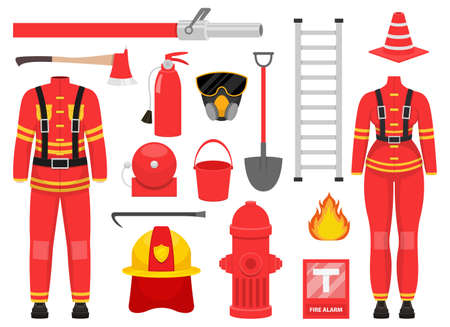Introduction to Fire Safety in UK Residential Renovations
Fire safety is a critical consideration for any residential renovation project in the United Kingdom. The importance of robust fire protection measures cannot be overstated, as failure to comply with legal requirements can have severe consequences for both property owners and developers. UK fire safety regulations are designed to safeguard lives and property by minimising the risk of fire outbreaks and ensuring swift evacuation in emergencies. The scope of these laws extends to all types of residential buildings undergoing renovation, whether it involves minor alterations or major structural changes. Property owners and developers must understand their obligations under current legislation, such as the Regulatory Reform (Fire Safety) Order 2005 and the Building Regulations 2010 (as amended), which set out specific standards for fire detection, alarm systems, escape routes, and materials used in construction. Failing to adhere to these standards can result in legal penalties, increased insurance premiums, or even criminal liability in the event of a fire-related incident. As such, compliance is not merely a statutory requirement but also an essential aspect of responsible property management and development.
2. Legal Framework and Regulatory Bodies
Residential renovation projects in the UK must comply with a comprehensive legal framework designed to ensure fire safety for occupants. The primary legislation governing fire safety in residential properties includes the Regulatory Reform (Fire Safety) Order 2005 and the Building Regulations Part B. Understanding these regulations, as well as the key roles of regulatory bodies, is essential for both landlords and property developers.
Key Legislation Governing Fire Safety
| Legislation/Regulation | Scope | Main Requirements |
|---|---|---|
| Regulatory Reform (Fire Safety) Order 2005 | All non-domestic premises, common areas of multi-occupied residential buildings | Risk assessment, appropriate fire precautions, maintenance of fire safety systems |
| Building Regulations Part B (Approved Document B) | All new builds, renovations, extensions, and material alterations to existing dwellings | Means of escape, fire detection and alarm systems, fire resistance of construction materials, emergency lighting |
The Roles of Regulatory Bodies
Local Authorities: Local authority building control officers are responsible for ensuring that any renovation or construction work complies with Building Regulations Part B. They review plans, conduct site inspections, and have the power to enforce remedial action if standards are not met.
Fire Brigades: The local fire and rescue service provides guidance on best practices, inspects high-risk properties, and may be involved in enforcement under the Fire Safety Order. Their expertise is often sought during major refurbishment projects to assess compliance with current fire safety requirements.
Enforcement and Compliance Procedures
If a renovation project fails to meet statutory obligations, both local authorities and fire brigades have enforcement powers ranging from issuing improvement notices to prosecuting serious breaches. It is therefore imperative for those involved in residential renovations to seek early consultation with these bodies to avoid delays or costly penalties.

3. Mandatory Fire Safety Requirements During Renovation
When undertaking residential renovations in the UK, strict legal obligations govern fire safety to protect both current and future occupants. Compliance with these compulsory measures is not only a matter of best practice but also a legal necessity under the Building Regulations 2010 (as amended) and the Housing Act 2004. The following key requirements must be adhered to throughout the renovation process:
Fire Doors
All new or replacement doors leading onto escape routes, such as corridors or stairwells, must be certified fire doors that provide at least 30 minutes of fire resistance (FD30). These doors should be properly fitted with intumescent strips and smoke seals, ensuring they close fully and automatically. This is particularly critical in multi-occupancy dwellings and Houses in Multiple Occupation (HMOs), where compartmentalisation is vital for slowing fire spread and facilitating safe evacuation.
Smoke Alarms
The installation of smoke detection systems is mandatory in all renovated residential properties. For single-family homes, interlinked smoke alarms must be fitted on every floor used as living accommodation. In kitchens, heat alarms are recommended. For HMOs, more stringent standards apply: mains-powered, interlinked smoke and heat alarms must be installed in circulation spaces and high-risk rooms according to British Standard BS 5839-6:2019.
Escape Routes
Clear, unobstructed escape routes are a fundamental requirement during and after renovation works. Any alteration affecting staircases, landings, or external exits must maintain adequate width and directness for emergency egress. Escape windows may be required in certain rooms above ground floor level if alternative means of escape are not available. Furthermore, emergency lighting should be considered for larger properties or those with complex layouts.
Fire-Resistant Materials
All structural elements—such as walls, floors, ceilings, and service penetrations—must incorporate fire-resistant materials meeting minimum fire integrity ratings specified by Approved Document B (Fire Safety) of the Building Regulations. For example, plasterboard with enhanced fire resistance, mineral wool insulation, and fire-stopping products around pipes and cables are commonly used to uphold compartmentation standards. Landlords must ensure that all materials used during refurbishment comply with relevant British Standards.
Legal Implications for Non-Compliance
Failure to implement these mandatory fire safety provisions can result in prosecution by local authorities, enforcement notices requiring remedial works, invalidation of building insurance, and potential civil liability for damages arising from fire-related incidents. Therefore, it is crucial to consult with qualified professionals—including building control officers and fire risk assessors—throughout the renovation process to achieve full compliance and safeguard residents’ wellbeing.
4. Risk Assessment and Compliance Procedures
Proper fire risk assessment is a cornerstone of legal compliance in UK residential renovation projects. Both the Regulatory Reform (Fire Safety) Order 2005 and the Housing Act 2004 emphasise the necessity for systematic identification and mitigation of fire hazards within dwellings. This process is not only a statutory requirement but also essential for safeguarding tenants, property, and investment.
Guidance on Carrying Out Fire Risk Assessments
A comprehensive fire risk assessment involves evaluating all potential sources of ignition, fuel, and oxygen, as well as considering means of escape and those at increased risk (such as children or disabled occupants). The process should be methodical, with all findings clearly documented to demonstrate due diligence.
Step-by-Step Fire Risk Assessment Procedure
| Step | Description |
|---|---|
| 1. Identify Hazards | Locate sources of ignition, fuel, and oxygen within the property. |
| 2. Identify People at Risk | Consider residents, visitors, contractors, and anyone else who may be present. |
| 3. Evaluate Risks | Assess the likelihood and potential impact of a fire, taking into account existing controls. |
| 4. Record Findings | Document hazards identified, actions taken, and further measures required. |
| 5. Implement Actions | Apply necessary changes such as installing alarms or improving escape routes. |
| 6. Review Regularly | Update assessments periodically and after any significant changes or incidents. |
Documentation and Evidence of Compliance
The law requires that landlords, managing agents, or responsible persons keep clear records of their risk assessments and corresponding actions. These documents must be readily available for inspection by local authorities or the Fire and Rescue Service upon request. Proper documentation not only demonstrates compliance but also provides critical evidence in defence against enforcement action or claims following an incident.
Duties by Role: Landlords, Contractors, Managing Agents
| Role | Main Responsibilities Regarding Fire Safety Compliance |
|---|---|
| Landlords | Ensure risk assessments are carried out; implement recommendations; maintain fire safety systems; provide information to tenants. |
| Contractors | Follow best practice during works; comply with site-specific safety plans; alert landlords/agents to new risks introduced by renovations. |
| Managing Agents | Coordinate regular reviews; monitor maintenance schedules; communicate compliance status to owners and tenants. |
Best Practice Tips:
- Engage a competent person for complex assessments or large HMOs.
- Use checklists aligned with official government guidance (e.g., LACORS or NFCC).
- Date-stamp all documents and retain copies for at least five years.
This structured approach ensures that all parties understand their legal duties under UK fire safety regulations during renovation projects—protecting residents while maintaining regulatory compliance.
5. Best Practices for Enhancing Fire Safety
Recommended Additional Measures Beyond Minimum Compliance
While meeting statutory fire safety requirements is essential, residential renovation projects in the UK should also consider best practices that go beyond the minimum legal standards. Integrating advanced fire safety measures not only protects property and lives but can also provide peace of mind for landlords and tenants alike. Below are several recommended strategies to elevate fire safety during and after renovations.
Integrating Fire Suppression Systems
Traditional smoke alarms and fire doors are crucial, but the installation of modern fire suppression systems such as domestic sprinklers or mist systems can significantly enhance protection. These systems are particularly advisable in open-plan layouts or buildings with vulnerable occupants, where evacuation may be challenging. Early suppression of fires can drastically reduce damage and provide critical time for safe evacuation.
Using Advanced Fire-Resistant Materials
When selecting materials for walls, ceilings, floors, and structural elements, prioritise those with high fire resistance ratings. Intumescent paints, fire-rated plasterboards, and non-combustible insulation materials offer enhanced protection by slowing the spread of flames and reducing toxic smoke emissions. Ensuring that all fixtures and fittings—such as doors, glazing, and sealants—meet British Standards (e.g., BS 476) further strengthens overall fire integrity.
Fostering Occupant Awareness
Even the most robust physical measures require informed occupants to be effective. Property owners should ensure that residents receive clear guidance on emergency procedures, including escape routes and the operation of safety equipment. Regular fire drills, visible signage, and accessible information sheets contribute to a culture of safety within multi-occupancy dwellings. Additionally, making tenants aware of their responsibilities—such as keeping exits clear and not tampering with alarms—is vital for maintaining compliance and readiness.
Conclusion: Creating a Safer Living Environment
By adopting these enhanced fire safety practices during residential renovations, property owners and managers demonstrate due diligence under both statutory obligations and moral duty of care. Proactively investing in advanced systems, superior materials, and occupant education helps to create safer homes that meet—and exceed—the expectations set out by UK legislation.
6. Enforcement, Penalties, and Legal Liabilities
Enforcement Actions by Local Authorities
In the United Kingdom, local authorities are empowered to enforce fire safety requirements in residential renovation projects. Building control officers and fire safety inspectors routinely conduct site visits to ensure compliance with statutory obligations such as those outlined in the Regulatory Reform (Fire Safety) Order 2005 and the Building Regulations 2010. Where deficiencies are identified, authorities may issue enforcement notices requiring rectification within a specified timeframe. In severe cases, prohibition notices may be served, halting works or occupation until satisfactory remedial action has been undertaken.
Penalties for Non-Compliance
The penalties for failing to meet fire safety standards during renovations can be significant. Criminal prosecution is possible under the Fire Safety Order, with unlimited fines and, in extreme cases, custodial sentences for responsible individuals. Additionally, non-compliant works may need to be dismantled or redone at the owner’s expense, leading to costly project delays and reputational damage. Repeat or wilful breaches of fire safety law attract harsher penalties and can result in prohibition from future property development activities.
Contractual Clauses Addressing Fire Safety
Renovation contracts in the UK typically include express clauses addressing fire safety responsibilities. These provisions generally require contractors to adhere strictly to all applicable fire safety regulations and codes of practice. Breach of such contractual terms can entitle the property owner to seek remedies including contract termination, damages for losses incurred due to non-compliance, and indemnities against third-party claims arising from fire-related incidents. It is also common for contracts to specify procedures for reporting hazards, implementing risk assessments, and coordinating with local authorities throughout the renovation process.
Best Practices for Risk Allocation
To mitigate legal liabilities, parties should ensure that renovation agreements clearly allocate responsibility for compliance with fire safety requirements. This includes specifying which party is responsible for obtaining approvals, maintaining documentation, and ensuring ongoing adherence to evolving legal standards. Incorporating robust indemnity clauses and requiring evidence of adequate insurance coverage further reduces exposure to enforcement actions and financial penalties.
Conclusion: Legal Due Diligence is Essential
Ultimately, strict adherence to statutory obligations and careful contractual drafting are critical in managing enforcement risks and liabilities related to fire safety in UK residential renovations. Both property owners and contractors must remain vigilant and proactive in their approach to legal compliance throughout every phase of a renovation project.
7. Resources and Further Guidance
Staying compliant with fire safety requirements in UK residential renovation projects demands constant reference to authoritative resources and up-to-date guidance. Below is a curated list of essential sources for legal standards, best practices, and expert advice:
Government Publications and Legislation
- UK Government Fire Safety Regulations: The official government portal (gov.uk/fire-safety) provides comprehensive access to legislation such as the Regulatory Reform (Fire Safety) Order 2005 and relevant updates.
- Building Regulations Approved Document B: This document details fire safety requirements for building works in England, available on the GOV.UK website.
Professional Bodies and Industry Guidance
- Fire Industry Association (FIA): The FIA offers training, technical documents, and regular updates on fire safety standards relevant to both landlords and renovators (fia.uk.com).
- Institution of Fire Engineers (IFE): For those seeking professional accreditation or detailed technical guidance, the IFE provides a range of resources (ife.org.uk).
Local Authority and Fire Service Advice
- Your Local Council’s Building Control Department: Councils offer tailored advice for renovation projects, including fire risk assessments and compliance checks. Visit your local authoritys website for specific contacts.
- Local Fire and Rescue Services: Many services publish residential fire safety checklists and offer free home fire risk assessments.
Additional Useful Resources
- LACORS Housing – Fire Safety Guidance: The LACORS guide is especially useful for landlords and managing agents (LACORS Fire Safety Guide PDF).
- The London Fire Brigade’s Home Fire Safety Checker: Online tools that help homeowners assess their property’s current level of fire protection (london-fire.gov.uk).
Professional Consultation
If you are unsure about your obligations or require bespoke advice, consider consulting a qualified fire risk assessor or a solicitor specialising in landlord-tenant law and property compliance. Keeping abreast of evolving regulations ensures legal compliance, tenant safety, and peace of mind during every stage of your renovation project.

